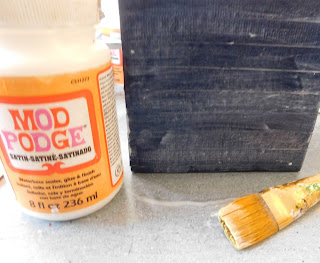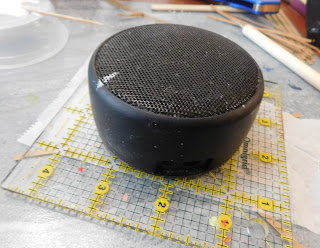I have another free pattern for you to download so you make the project. You can find the file here. In the download there are 3 files: a PDF for hand-cutting of the pieces, a PNG to use with your electronic cutting machine and a text file with handy hints and tips (and the sizing information) to use the PNG.
As with most of these projects I cut all the pieces from medium weight white card-stock, the kind used to make cards and such. This is way more economical than having to purchase a bunch of colors and in my experience the paint colors are a lot more stable than the paper colors. I rarely get noticeable fading with the painted projects.
You are free to use the pattern as many times as you wish and even to sell the finished project. But, please don’t give away or sell my patterns. I spend a lot of time creating them and the only compensation I get is from people watching the videos and checking out the blog post. I really want to keep offering these for free so please if someone else wants to make one send them to the video and blog so they can get their own copy of the pattern.
Since I wanted to make this table more sturdy than some of our other projects I decided to use 6 layers on each pattern piece and I have to say it does make for nice sturdy table once the glue dries.
So as you saw in the video there are only 3 pieces to the table with each of those being made up of 6 layers. For that reason this is a fairly easy project to assemble. Since there are so many layers though it is going to take longer to dry than some of the thinner projects we have made in the past. So allow extra drying time. And be sure to add a bit of weight to the project at least in the beginning of the drying process.
Once dry it is time to assemble the table, for this we will need a small piece of 1/8” by 1/8” strip wood. I used 4 pieces of this cut at ½” long each. These little pieces will help that thin table leg get a much better grip to both the table top and bottom.
Before you start to glue the table together smooth and slightly round the edges of all 3 layer pieces with some sandpaper, a sanding block or an emery board. This step is much easier at this point.
Now find the center of the two round pieces and make a mark to help you with lining up the table leg.
Next I cut 4 pieces½” long of a thin wood strip. The one I used was 1/8” square.
Then add some glue to the center of the bottom side of the table top and add the skinny end of the anchor. Glue one of the ½” pieces of strip wood on each side of the table leg to help hold everything together. I did add a couple of drops of a CA type superglue to the joints to help it stay in place while the tacky glue was setting up.
Once the table leg and table top have had time for the glue holding them together to dry repeat the same process to glue the bottom of the anchor (table leg) to the top side of the table base. Adding the other 2 pieces of the strip wood, one to each side. Allow the glue to dry.
When the glue is dry (mine wasn’t as dry as I would have liked because I was trying to hurry) give the entire table a coat of whatever color you want to have showing through in the “aged” spots of the final paint job. I used State Blue but really any color that you choose will be wonderful. I am only giving my table what I am referring to as a “rough coat” of paint because in the end I want a table that looks old and worn. Allow this coat of paint to dry.
Once the undercoat of paint is dry you can topcoat with another “rough coat” of whatever color you want to be the table color. For my table I used some white craft paint and a very stiff brush, that way it was much easier to make the paint look old and worn away from the beginning so less work when I go to age the table. Allow the top coat to dry.
Once the paint dries add a coat of a clear finish and allow that to dry. I used some Satin Mod Podge on mine. Once dry this table is ready to sit either in the dollhouse or out on the dollhouse porch.
As always I do want to sincerely thank all of you for watching my videos and reading my blog posts. It means so much to me that you are supporting me in this way. If I could ask you all to do just a bit more by subscribing to the channel and liking the videos and leaving comments. Those help more than you can imagine. Also if you could pass the links on to your friends I would appreciate it so much.












































